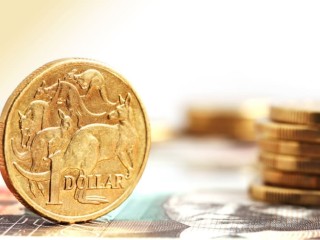 The Australian dollar has fallen back below parity with the US dollar for the first time in 2012, based on mounting fears that Greece is preparing to default on its debt by exiting the euro zone and the potential impact of softer Chinese growth on Australia’s economy.
The Australian dollar has fallen back below parity with the US dollar for the first time in 2012, based on mounting fears that Greece is preparing to default on its debt by exiting the euro zone and the potential impact of softer Chinese growth on Australia’s economy.
The news has been greeted as a positive development for Australia’s export beef industry, which has lost ground in key export markets to more competitively priced US beef exports since the $A moved above parity with the $US in early 2011.
If sustained, a below-parity dollar should help to improve the price competitiveness of Australian beef in major export markets such as Japan and Korea.
However, when falls in the dollar are associated with downturns in economic activity and demand, as appears to be the case in this instance, the benefits may not be as significant as Australian beef industry stakeholders might hope.
MLA chief economist Tim McRae points out that while Australia’s beef industry would rather have an $A at US99c than US105c or higher, the softer economic factors that are driving the dollar down are also likely to pull overall beef demand down.
“You take a step forward and on the other side you take a step back,” Mr McRae said.
“Ideally we would love to see the $A decline on a strengthening US dollar and positive economic signals overseas, but I think this one is just associated with more problems in Europe and the Australian economy showing a few signs of slowing.
“It is nice to see the dollar under parity, but we would love to see a demand response with it, which would really accentuate the benefits.”
With uncertainty dominating economic news, importers were likely to sit back and wait until they saw a tangible improvement in demand before increasing orders, regardless of where the $A was trading, Mr McRae said.
Westpac senior manager, agribusiness, Nigel Stewart said a lower Australian dollar was important for Australian beef producers and exporters.
“As Zanda MacDonald said at the Westpac beef breakfast (at Beef 2012 last Wednesday), a parity AUD v USD would go a long way to boosting profit margins versus the last 12 months,” Mr Stewart said.
“Beef exports should see some relief at least in the short term as a result of this.”
Mr Stewart said there were numerous financial market strategies that exporters could use to lock-in rates for a period of time to take advantage of favourable movements in the AUD. This took out some of the variability in foreign exchange and allowed clients to predict future profit and loss movements more accurately.
“In the short term, one would say that this downward movement would remain around parity off the back of the government announcing spending cuts following the RBA interest rate movement recently – consumer sentiment is still below average which does not help.”
